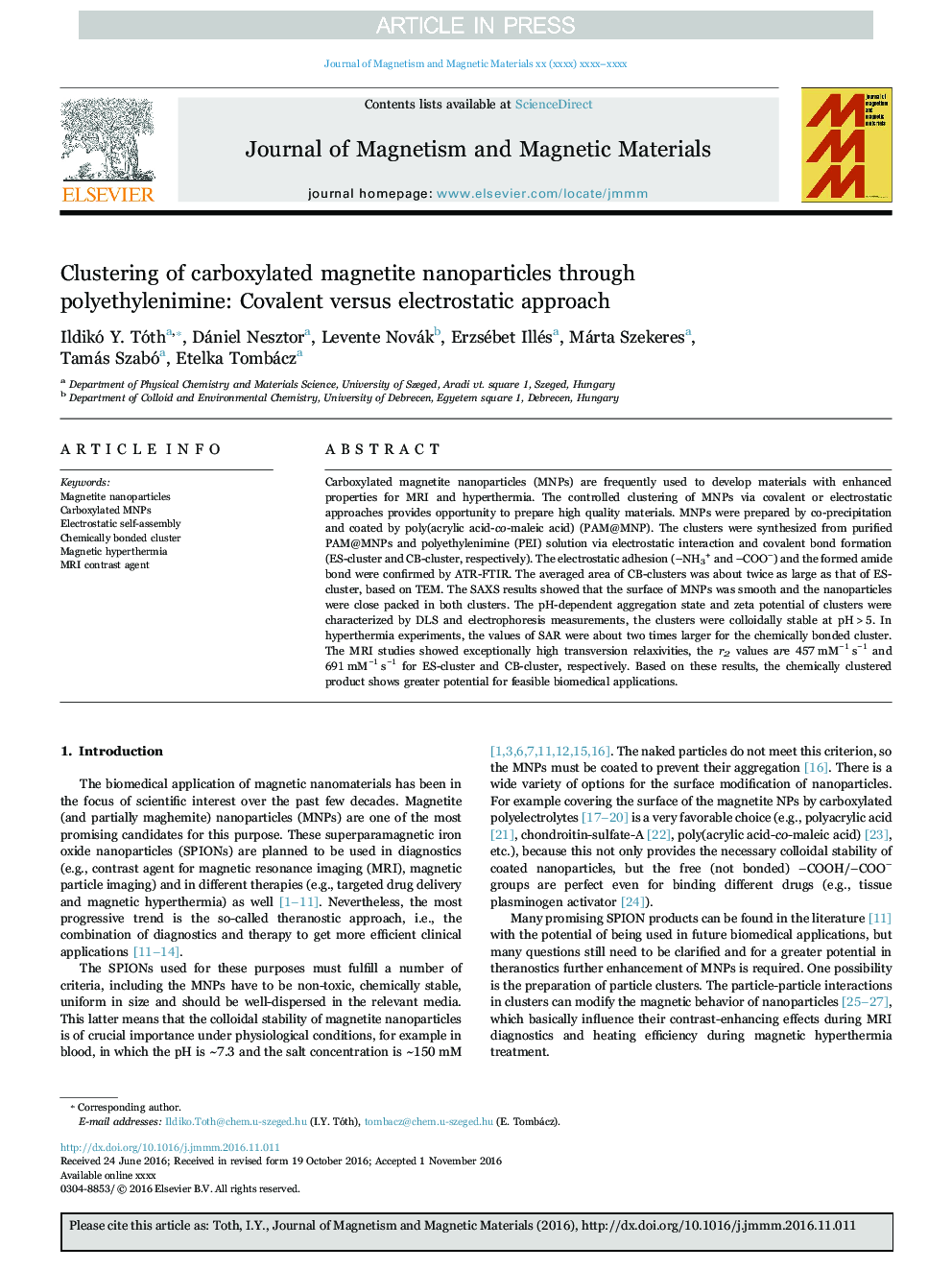| کد مقاله | کد نشریه | سال انتشار | مقاله انگلیسی | نسخه تمام متن |
|---|---|---|---|---|
| 5491194 | 1524794 | 2017 | 9 صفحه PDF | دانلود رایگان |
عنوان انگلیسی مقاله ISI
Clustering of carboxylated magnetite nanoparticles through polyethylenimine: Covalent versus electrostatic approach
ترجمه فارسی عنوان
خوشه بندی نانوذرات کربوکسیل شده مگنتیت از طریق پلی اتیلنیمین: رویکرد کووالانتی و الکترواستاتیک
دانلود مقاله + سفارش ترجمه
دانلود مقاله ISI انگلیسی
رایگان برای ایرانیان
کلمات کلیدی
موضوعات مرتبط
مهندسی و علوم پایه
فیزیک و نجوم
فیزیک ماده چگال
چکیده انگلیسی
Carboxylated magnetite nanoparticles (MNPs) are frequently used to develop materials with enhanced properties for MRI and hyperthermia. The controlled clustering of MNPs via covalent or electrostatic approaches provides opportunity to prepare high quality materials. MNPs were prepared by co-precipitation and coated by poly(acrylic acid-co-maleic acid) (PAM@MNP). The clusters were synthesized from purified PAM@MNPs and polyethylenimine (PEI) solution via electrostatic interaction and covalent bond formation (ES-cluster and CB-cluster, respectively). The electrostatic adhesion (-NH3+ and -COO-) and the formed amide bond were confirmed by ATR-FTIR. The averaged area of CB-clusters was about twice as large as that of ES-cluster, based on TEM. The SAXS results showed that the surface of MNPs was smooth and the nanoparticles were close packed in both clusters. The pH-dependent aggregation state and zeta potential of clusters were characterized by DLS and electrophoresis measurements, the clusters were colloidally stable at pH>5. In hyperthermia experiments, the values of SAR were about two times larger for the chemically bonded cluster. The MRI studies showed exceptionally high transversion relaxivities, the r2 values are 457Â mMâ1Â sâ1 and 691Â mMâ1Â sâ1 for ES-cluster and CB-cluster, respectively. Based on these results, the chemically clustered product shows greater potential for feasible biomedical applications.
ناشر
Database: Elsevier - ScienceDirect (ساینس دایرکت)
Journal: Journal of Magnetism and Magnetic Materials - Volume 427, 1 April 2017, Pages 280-288
Journal: Journal of Magnetism and Magnetic Materials - Volume 427, 1 April 2017, Pages 280-288
نویسندگان
Ildikó Y. Tóth, Dániel Nesztor, Levente Novák, Erzsébet Illés, Márta Szekeres, Tamás Szabó, Etelka Tombácz,
